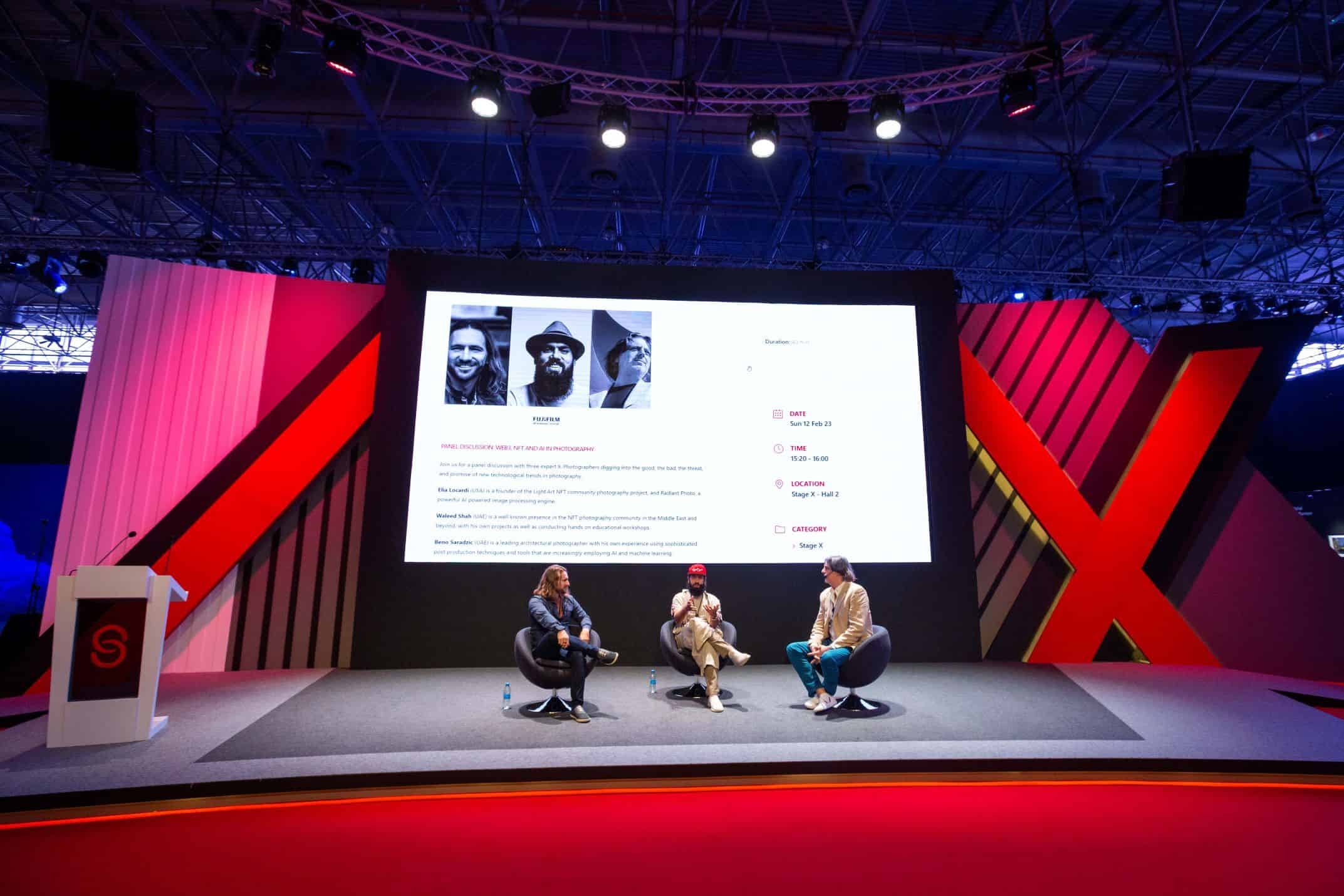SHARJAH, UAE — Renowned photographers Elia Locardi, Waleed Shah and Beno Saradzic have turned the spotlight on the impact of new technological trends in photography, including the rise of Web3 and NFT photography at the ongoing International Photography Festival (Xposure).
At a discussion titled “Web3, NFT and AI in Photography” hosted at the festival’s newly created activation ‘Stage X’, the panellists agreed that these technologies have opened up a new frontier for selling and collecting digital art. The trio also touched upon the rapidly growing trend of AI and deep learning models, which have the capability of generating photo-realistic images from text prompts.
American travel photographer Locardi said, “It is clear that the rise of Web3 and NFT photography, along with AI and deep learning models, are transforming the landscape of photography and the creative industry at large. The impact of these technologies is multifaceted, offering both opportunities and challenges, and it is imperative that we continue to engage in discussions and debates to fully understand and capitalise on their potential.”
Slovenian architectural photographer Saradzirc said, “AI and deep learning models are not substitutes for human creativity. They should be viewed as tools that can enhance the creative process. The possibilities are endless, and it’s exciting to see where these technologies are headed a few years from now.”
Putting forth his opinion, NFT enthusiast Waleed Shah said, “AI, Web3 and NFTs have opened new markets and we must embrace and seize the opportunity. As artists, it provides us with new avenues for monetising our work and reaching new audiences. It’s crucial that we address the security and safety concerns surrounding digital assets, but with the right measures in place, the potential for growth and success in these new markets is tremendous.”
The panelists emphasised that these technologies, despite their potentially disruptive nature, should be viewed as tools that can augment the creative process, instead of being perceived as substitutes. They noted that while it is still early days, these technologies are likely to become even more sophisticated and will play a crucial role in shaping the future of photography and the way we perceive content at large.
The Web3 NFT and AI in photography panel discussion was just one of the many highlights of this year’s festival, which will continue to offer insights and perspectives on the latest advancements in everything image until 15th February.








